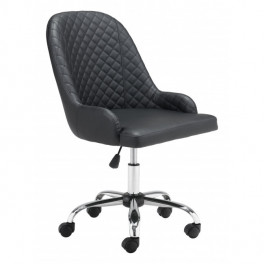One word captures the essence of a Japanese interior design style: simplicity. Clean, open, balanced, natural, and beautiful, peaceful décor reflects a Zen state of mind.
Zen is a belief system that sees enlightenment being attained by intuition via meditation. But even if Zen isn’t your thing, having serene surroundings to nurture intuition can serve you well. This design style, then, can touch every aspect of your life.
So how can you create this oasis of tranquility in the midst of a fast-paced life? Follow these seven tips to bring the harmony of Japanese interior design styles into your space.
1. Use Natural Colors
The most prominent colors in Japanese décor are brown, gray, and green. This makes sense because these colors are nature’s favorite crayons, and Japanese décor celebrates the wisdom of nature.

Photo by Artazum on Shutterstock
Even a room that’s not trying to evoke Japanese style, such as the one above, will have a placid feel with this natural palette. The same effect can be attained with these colors in a modern space.
2. Invite Nature Inside
Japanese décor uses three techniques to merge interior design with the outdoors.
First, it relies on large windows to minimize the barriers between the interior and the exterior.

Photo by stock_SK on Shutterstock
Notice how the window coverings on the large window are drawn completely away from the window. This creates an illusion of nothing solid separating the inside from the outside. If you’re working with “normal” windows, keeping the window coverings away from the glass will give you more of a Japanese feel.
If you’re lucky enough to choose your windows, you can truly get the spaciousness of nature into your home with floor-to-ceiling windows.

Photo by yampi on Shutterstock
The second way Japanese style partners with nature is using rocks in interior design. This can be done with a rock wall if you don’t want to cart rocks into your room.

The third way to bring nature indoors is with — well — nature. Japanese interior design styles almost always include plants. They are not only emissaries of Mother Nature, but they also oxygenate a room, which contributes to the clear mind this style engenders.

Photo by united photo studio on Shutterstock
3. Weigh in with Wood
Japanese interior design relies heavily on wood. The most common woods used in this style are maple, red pine, hemlock, and of course, bamboo.

Photo by miya227 on Shutterstock
Bamboo can easily be brought into a room in the flooring, as in the room above. But it looks even more Japanese when paired with another bamboo element, like a headboard.

Photo by Ramon grosso dolarea on Shutterstock
Just filling a room with clean expanses of wood can tilt a bland contemporary room toward having more of a Japan-inspired character.

Photo by Ramon grosso dolarea on Shutterstock
4. Go Low
Traditional Japanese interiors use low furniture. Therefore, the lower your furniture’s architectural footprint, the more you’ll activate a Japanese impression in your room.

Photo by Feel Photo Art on Shutterstock
Even in a modern style room that isn’t intended to be Japanese in influence, low furniture can leave its quiescent mark. There’s something about being close to the floor that generates an “ahh” feeling.
5. Minimalize
Japanese styling is the epitome of “less is more.”

Photo by Photographee.eu on Shutterstock
Notice how the room above, even though it’s modern, has more of a Japanese feel to it than the prior photo showing low furniture. The more spare space there is in a room, the more it will reflect the interior design styles from the Land of the Rising Sun.
Japanese design is clean and tidy. Anything that suggests clutter will destroy the style, even if the clutter includes Japanese design elements.

Photo by Jason Stitt on Shutterstock
The room above has many Japanese style elements. It has the color scheme, the wood, the low furnishings, lots of natural light, and plants. But the plants, even though they are important to a serene style, are too numerous and too bunched up. They create clutter instead of inspiring calm.
Open floor space is essential to the Japanese style.

Photo by alexandre zveiger on Shutterstock
Your furniture doesn’t have to hug the walls as it does in the room above. But your room should say, “Space,” more than it says, “Furniture.”
6. Showcase Shoji Screens
The design element probably most associated with Japanese interior design is the shoji screen.

Photo by LI CHAOSHU on Shutterstock
This isn’t just because the screens have a Japanese origin. It’s also because the screens bring wood and light into a room’s design. Therefore, adding a shoji-style door or partition can create a Zen sensibility.
7. A Place to Soak
Water symbolizes the flow of energy in Japanese designs. Therefore, a water design feature in your home or just outside of it would perfectly capture the gentle ease of this style.

Photo by Jamie Hooper on Shutterstock
If you don’t have the resources or space for this sort of décor addition, though, you can stick to tubs. A Japanese-inspired bathroom will have a soaking tub, preferably placed near a window.

Photo by Breadmaker on Shutterstock
You can also add an outdoor tub surrounded by lush plants for privacy.

Photo by Bhakpong on Shutterstock
The restful ambiance of a Japanese interior design style can easily be achieved using all or some of these tips. A strong upside of this type of design is that its features are down-to-earth and reasonably affordable. And of course, the bottom line is that the mellow result you get with this décor can be beneficial to you and your family.





































